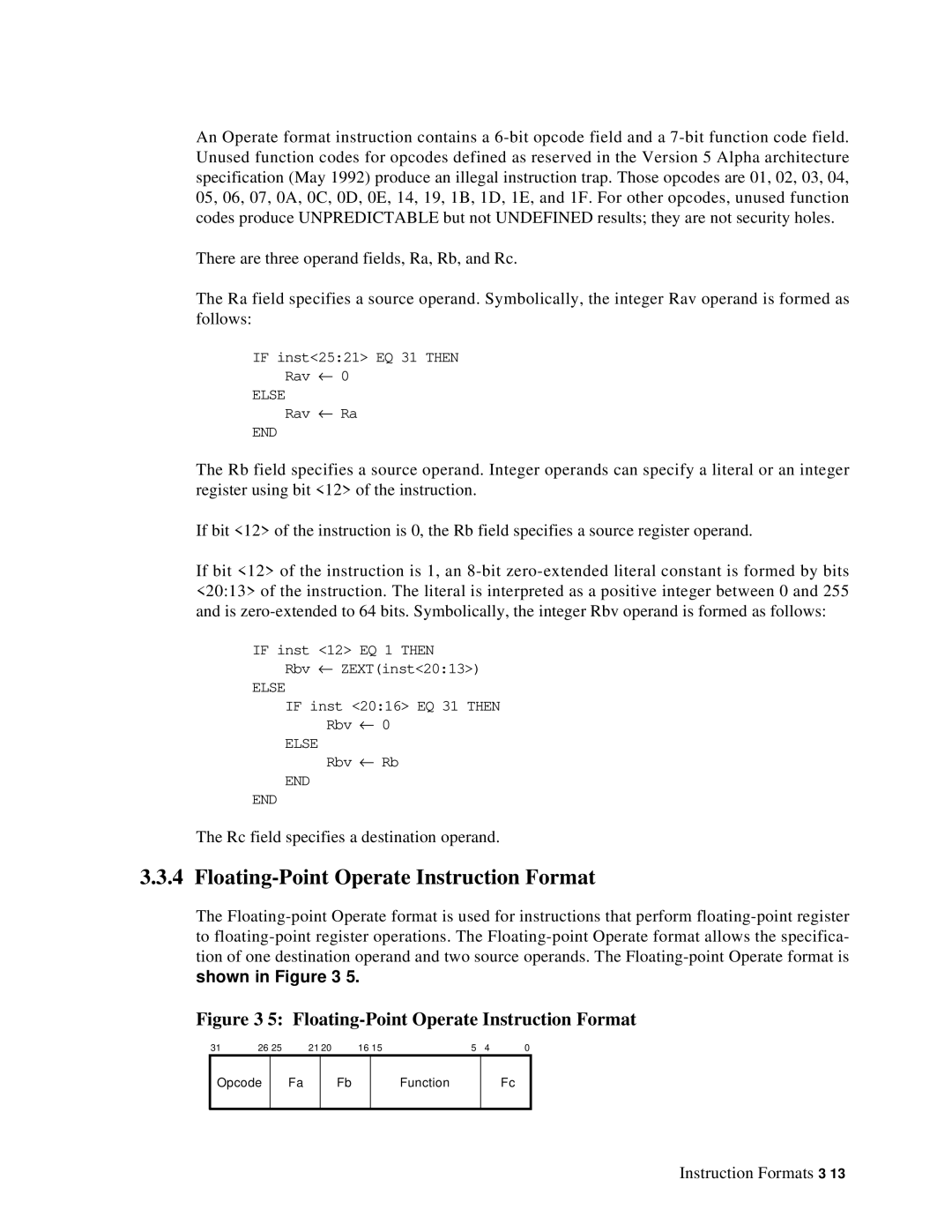An Operate format instruction contains a
There are three operand fields, Ra, Rb, and Rc.
The Ra field specifies a source operand. Symbolically, the integer Rav operand is formed as follows:
IF inst<25:21> EQ 31 THEN
Rav ← 0
ELSE
Rav ← Ra
END
The Rb field specifies a source operand. Integer operands can specify a literal or an integer register using bit <12> of the instruction.
If bit <12> of the instruction is 0, the Rb field specifies a source register operand.
If bit <12> of the instruction is 1, an
IF inst <12> EQ 1 THEN
Rbv ← ZEXT(inst<20:13>)
ELSE
IF inst <20:16> EQ 31 THEN
Rbv ← 0
ELSE
Rbv ← Rb
END
END
The Rc field specifies a destination operand.
3.3.4 Floating-Point Operate Instruction Format
The
Figure 3–5: Floating-Point Operate Instruction Format
31 | 26 25 | 21 20 | 16 15 | 5 | 4 | 0 |
Opcode
Fa
Fb
Function
Fc
Instruction Formats
